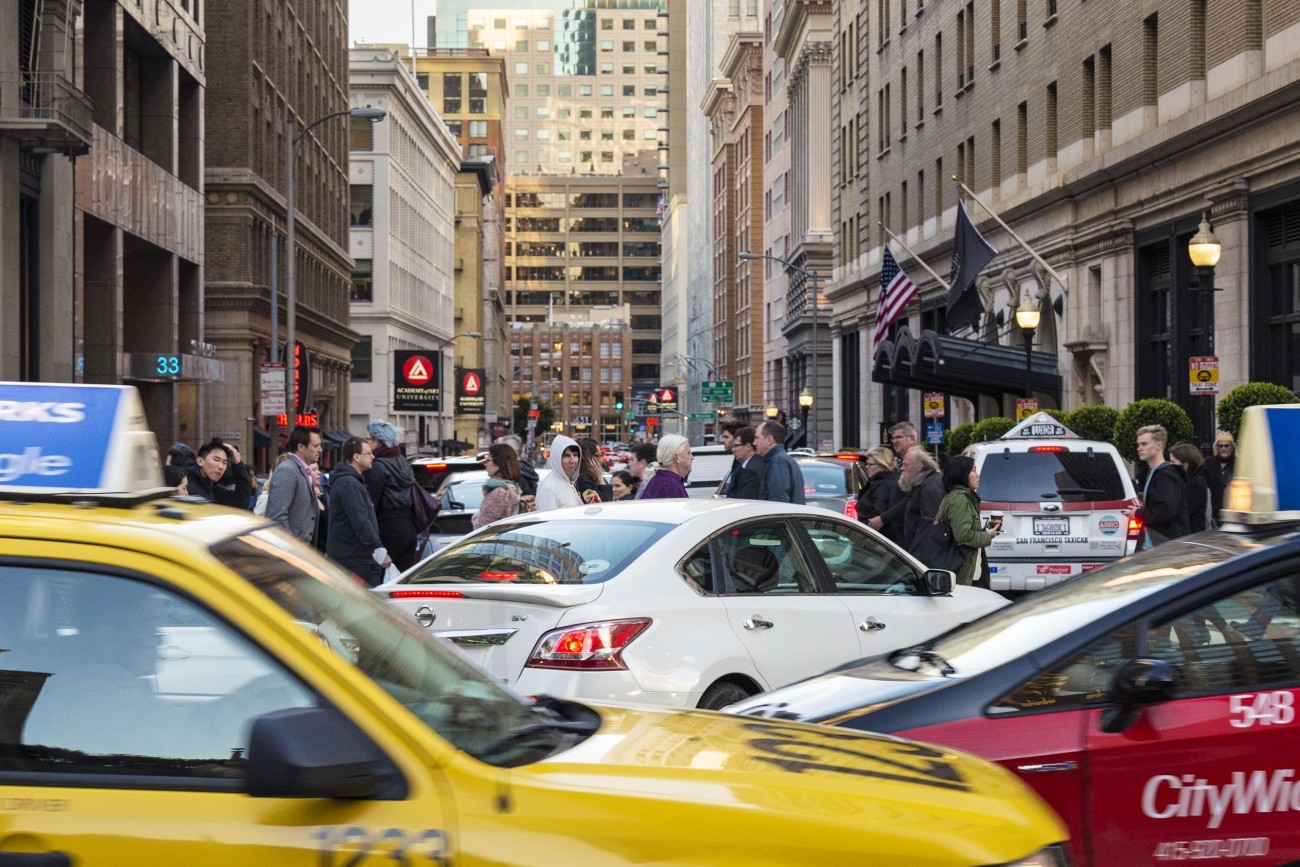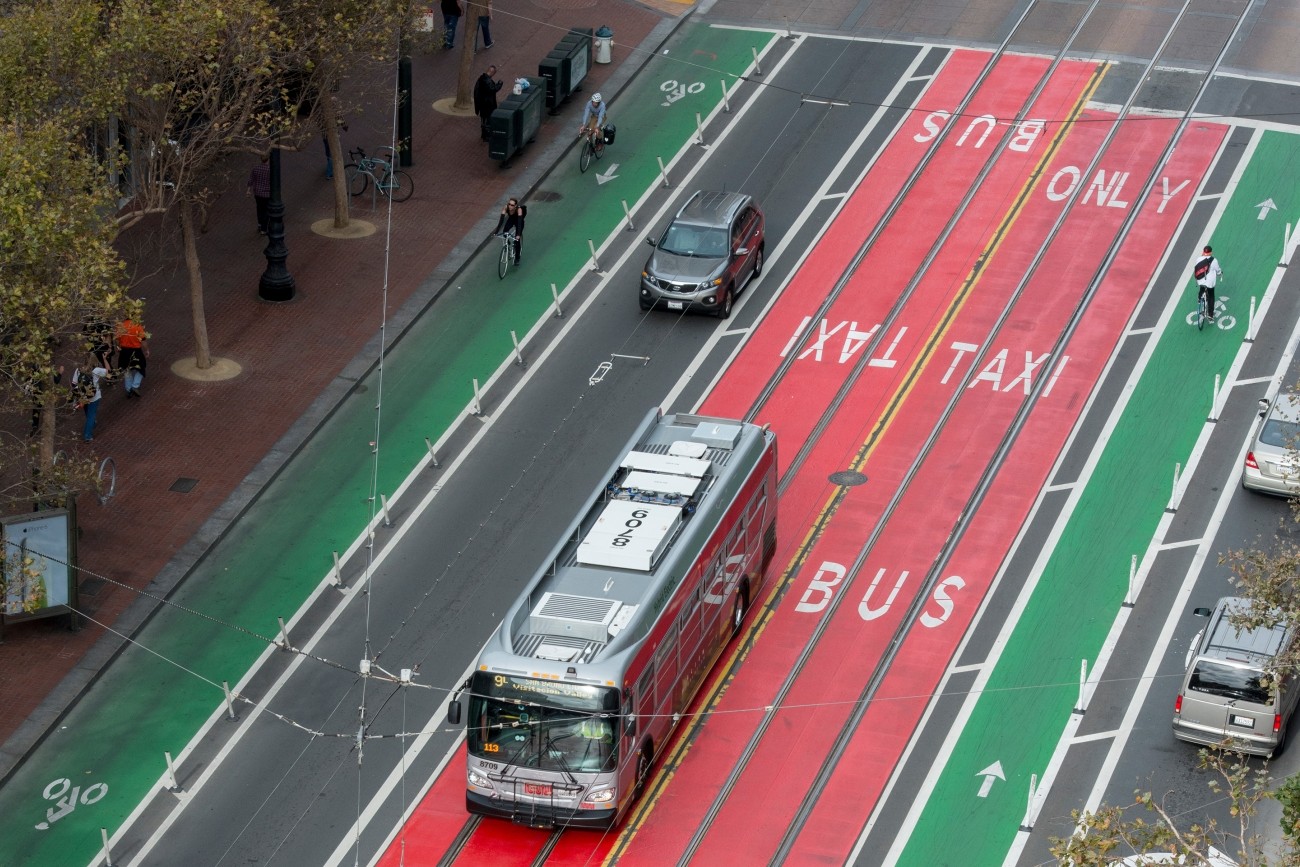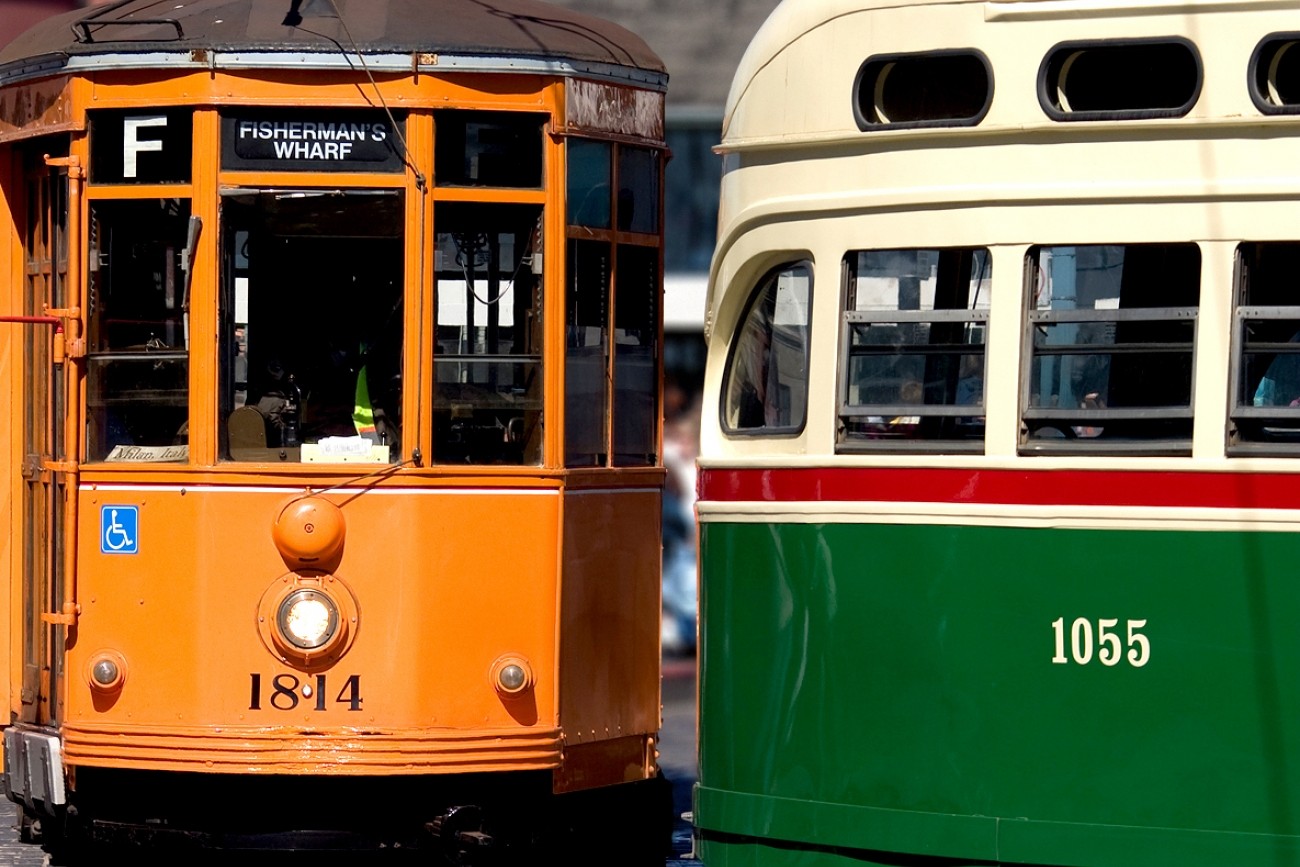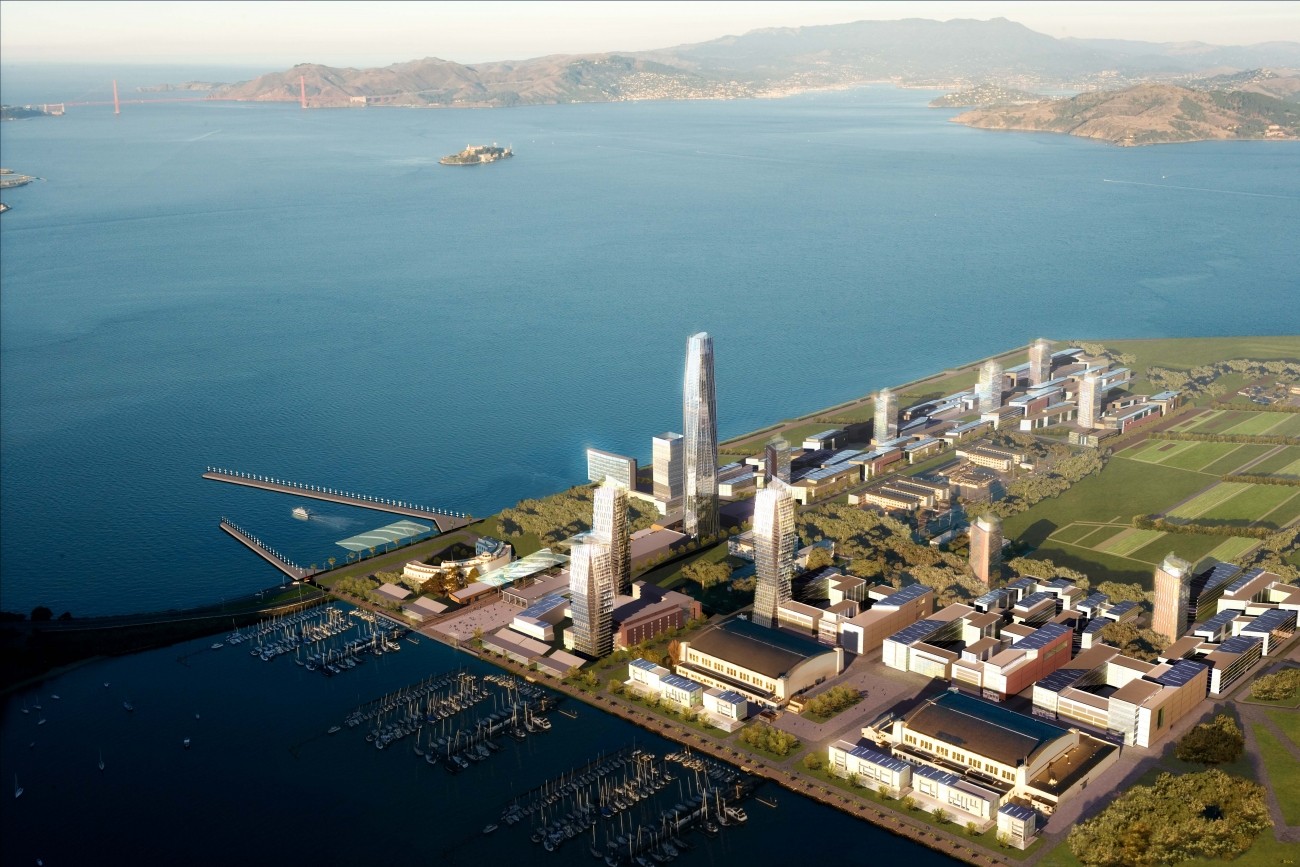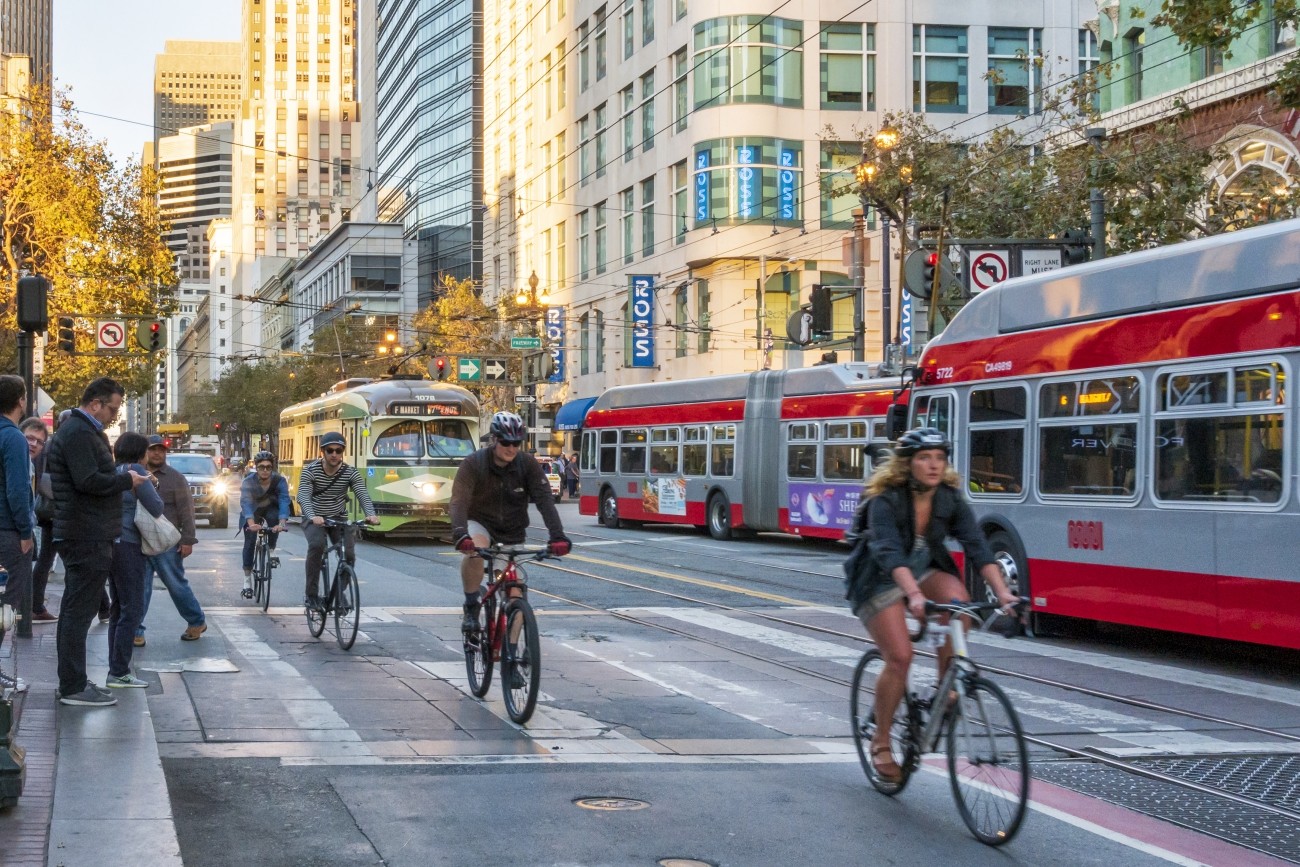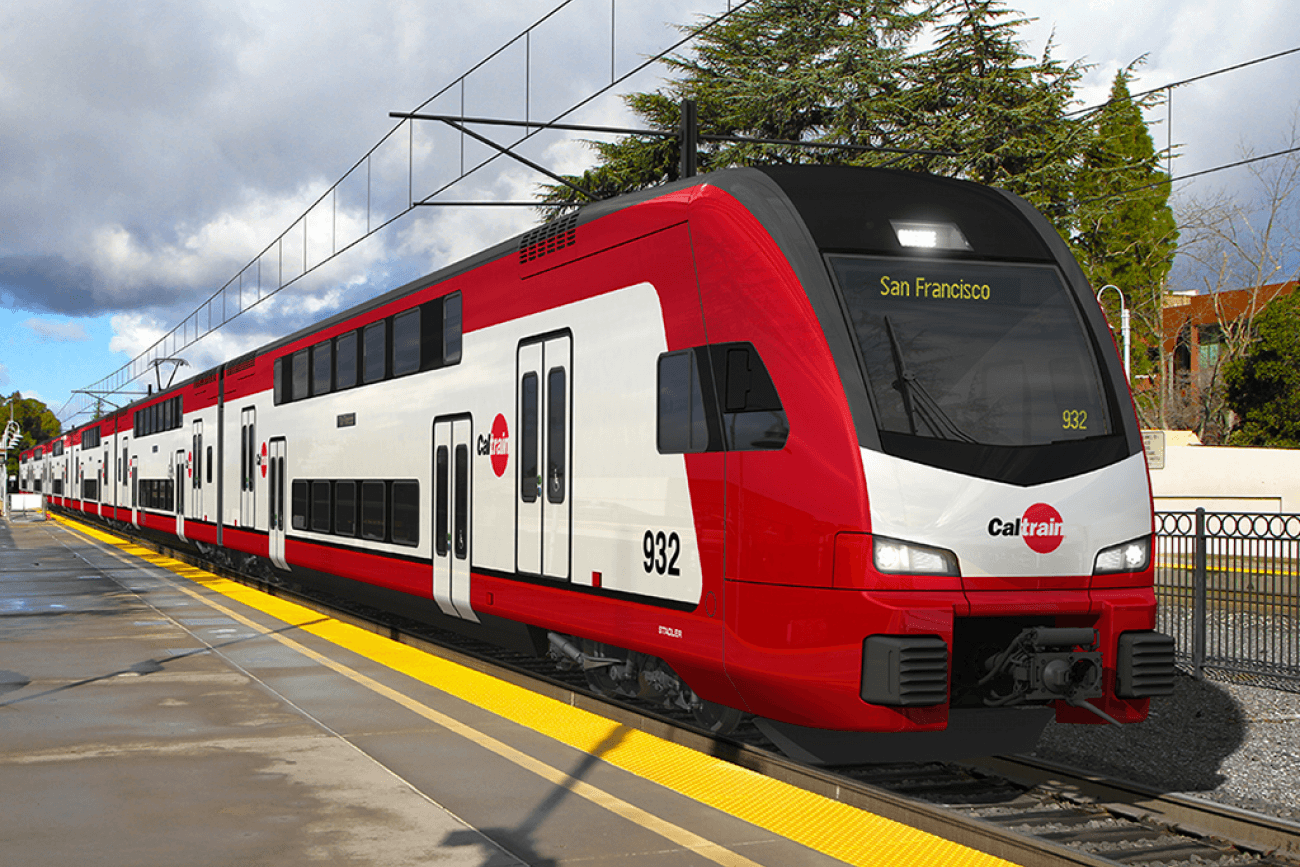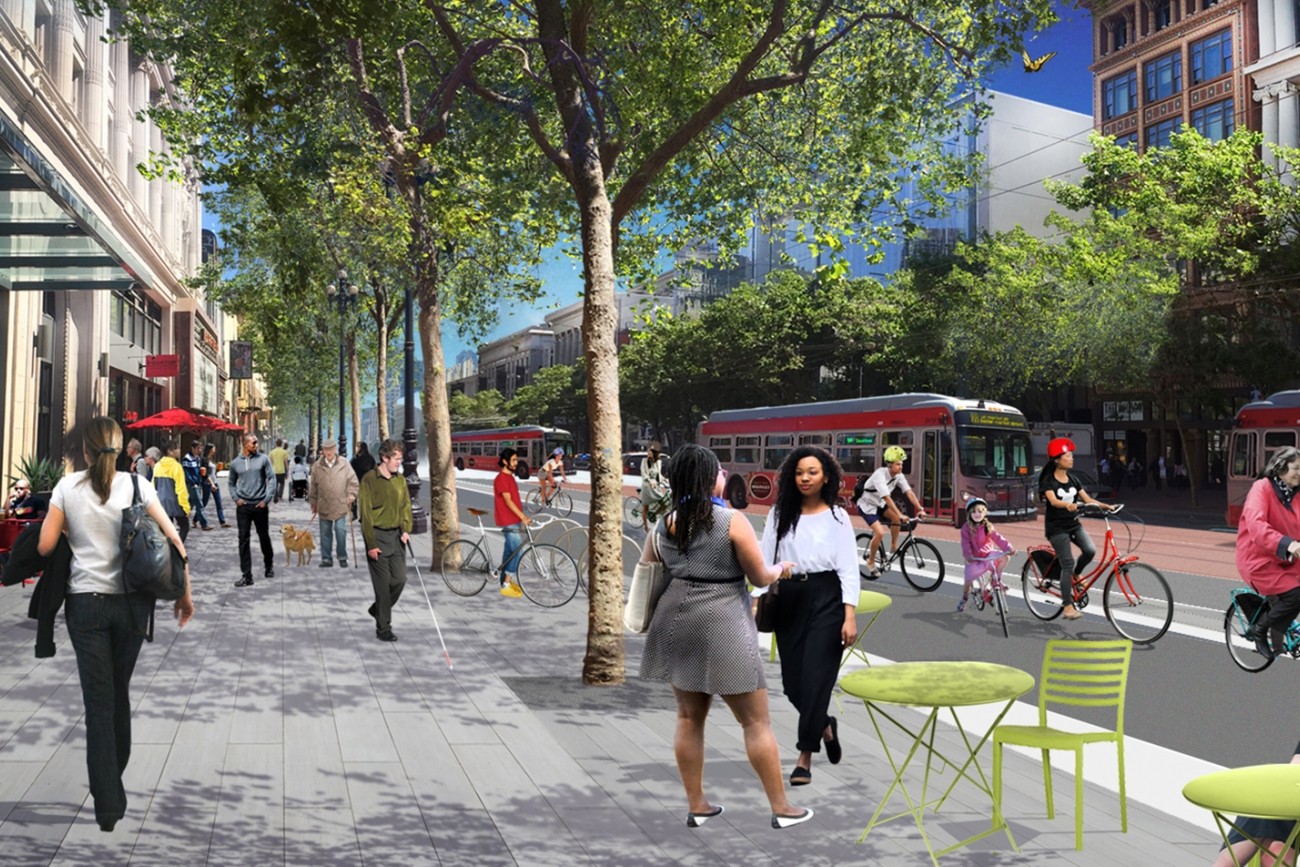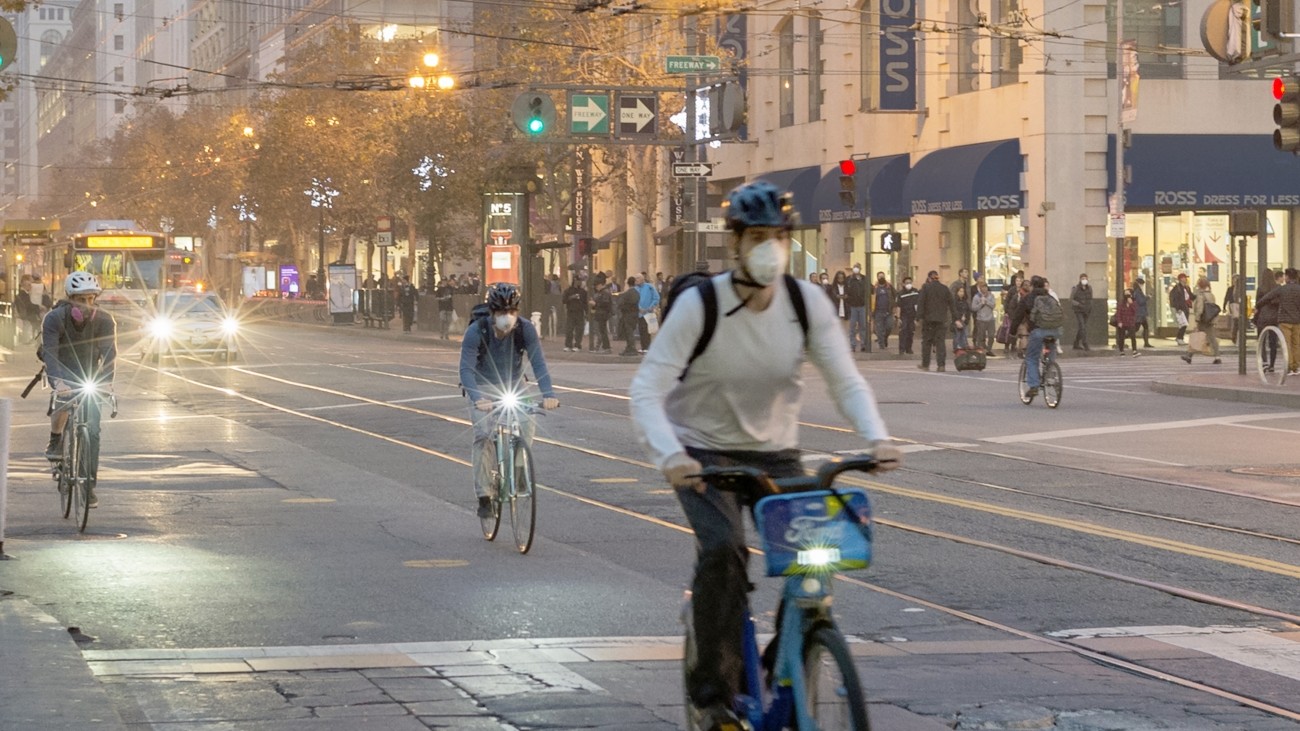
Photo: Sergio Ruiz, flickr
Pursuing a Clean Transportation Future
Replacing car travel with more sustainable modes will reduce greenhouse gas emissions and create a healthier environment for San Francisco residents, workers, and visitors.
Emissions from cars and trucks are responsible for 46% of San Francisco’s carbon footprint. Transportation emissions also raise major health concerns: exhaust from cars and trucks can exacerbate asthma in children and is linked to other respiratory and heart diseases. Residents who live in San Francisco’s Equity Priority Communities are especially vulnerable to health impacts from transportation emissions as they are located near many of our busiest roads and freeways.
The Transportation Authority is committed to helping San Francisco reduce greenhouse gas emissions from transportation. We are working at local, regional, and state levels to shape a clean, affordable, and efficient transportation future.
San Francisco’s Goal: 80% Sustainable Trips
San Francisco has set the goal of achieving 80% of trips by transit, biking, walking, and carpooling by 2030.
Reaching this goal is crucial: The California Air Resources Board reported in 2018 that California is failing to meet its climate goals because emissions from vehicle travel are increasing. The agency stated that California will not achieve our emissions reduction goals without significant changes to how communities and transportation systems are planned, funded, and built.
The Transportation Authority is working to reduce San Francisco's transportation-related greenhouse gas emissions by:
Leveraging San Francisco’s half-cent sales tax and other funding sources to green and expand San Francisco's transit fleet, support Transit-First projects, and increase street safety for people walking and biking. Our Transportation Fund for Clean Air program also funds electric vehicle chargers and bike racks throughout the city.
Partnering with local agencies like the SFMTA and SF Environment to help residents, workers, and visitors make more sustainable transportation choices through efforts like Safe Routes to School and Emergency Ride Home. In response to pandemic-related transit reductions, we supported SFMTA’s creation of the Essential Trip Card to help transit-dependent seniors and people with disabilities access services.
Using pricing and incentive tools to reduce congestion and fund transit. Examples of this include our work on downtown congestion pricing and the Treasure Island Transportation Program.
Coordinating with policymakers to shape San Francisco’s transportation future through efforts like the San Francisco Transportation Task Force 2045 and Assembly Bill 1184, which would tax ride-hail trips in San Francisco and use revenues to fund transit.
Supporting long-range planning efforts at the state and regional levels, including ConnectSF and Plan Bay Area.
Working with new mobility providers to support cleaner, more sustainable trip making.
Working with employers and developers to support cleaner, more sustainable trip making through the Transportation Sustainability Program.
Our Choices Matter
It will take all of us to reach San Francisco’s transportation goals. Are you taking at least 80% of your trips on public transit or by carpooling, biking or walking? Learn more about how to travel sustainably in San Francisco.
Resources
SF Environment: San Francisco Climate Action Plan
SFMTA: Transportation Climate Action Strategy
SFMTA: Climate Goals, Targets, and Trends
